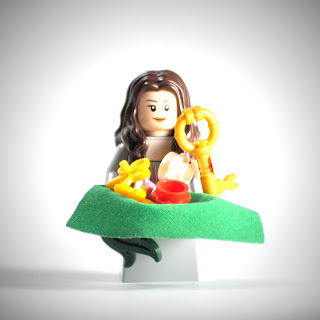St. Agatha Kim A-gi was born to Confucian family. She married young and began to convert to Catholicism because of her sister's testimony, before Christianity was persecuted in Korea. She loved learning about her faith, but couldn't memorize the prayers and liturgy. Instead, she always repeated a simple prayer to Jesus and Mary, no matter what. Though she was only studying to be a Christian and hadn't even been baptized, she was arrested when persecution began. While in prison, Agatha was finally baptized, which redoubled her strength to resist her captors. She refused to turn on her friends, refused to give in to torture, and refused to deny God, instead repeating only her simple prayer to Jesus and Mary. She was executed a martyr for her faith. Lifetime: 1787 to 1839 Region: Seoul, Korea Patronages: Korean Christians; Converts; Issues with memory (informal) Iconograpy: Downturned sword; Lilies; Hanbok dress Feast Day: May 24






